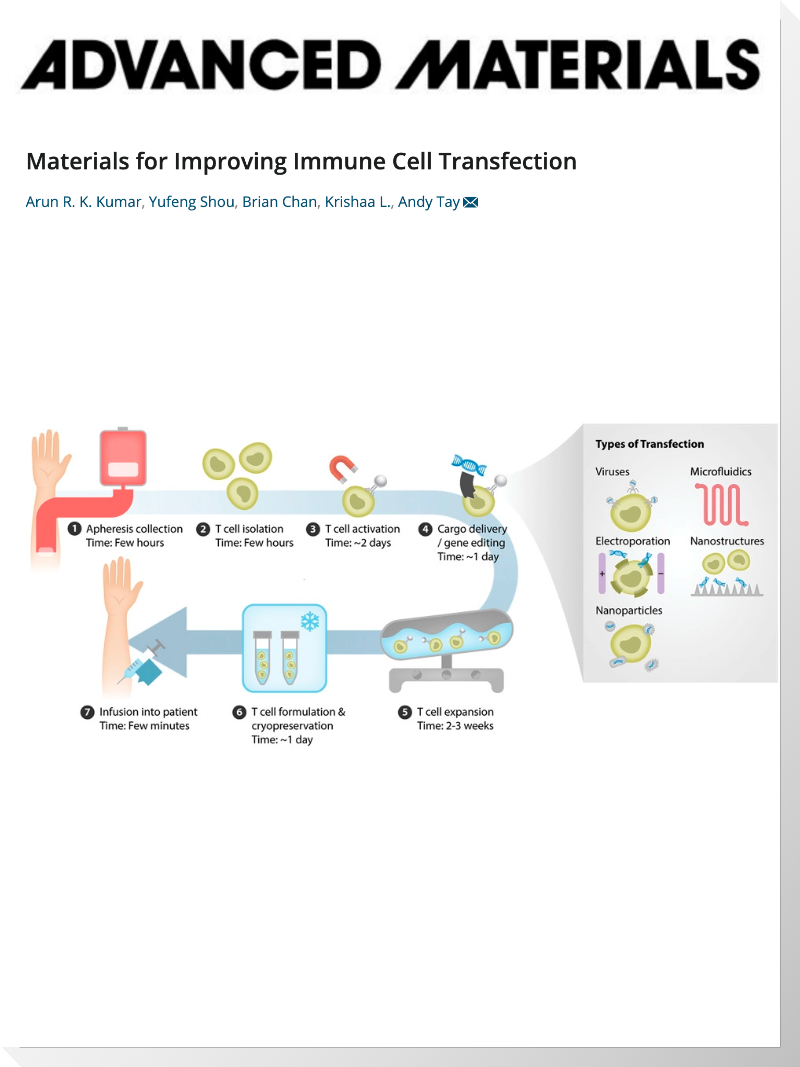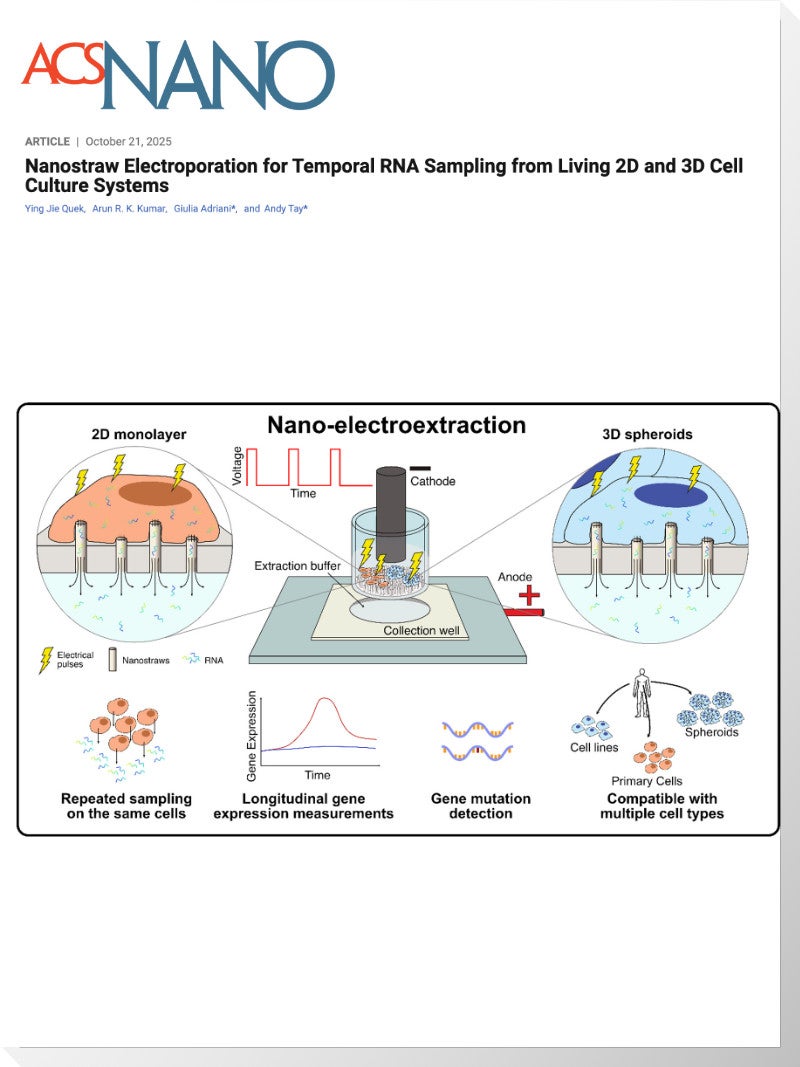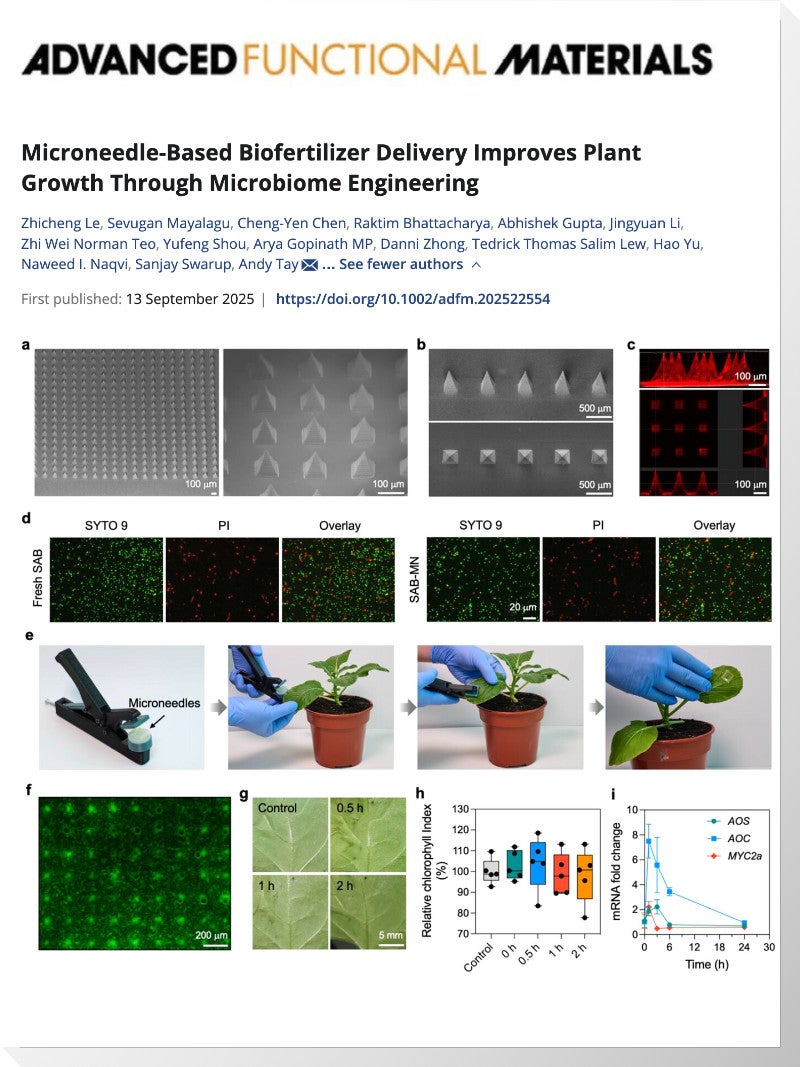Materials for Improving Immune Cell Transfection
- April 15, 2021

Materials for Improving Immune Cell Transfection
Arun R. K. Kumar, Yufeng Shou, Brian Chan, Krishaa L., Andy Tay
Abstract
Chimeric antigen receptor T cell (CAR-T) therapy holds great promise for preventing and treating deadly diseases such as cancer. However, it remains challenging to transfect and engineer primary immune cells for clinical cell manufacturing. Conventional tools using viral vectors and bulk electroporation suffer from low efficiency while posing risks like viral transgene integration and excessive biological perturbations. Emerging techniques using microfluidics, nanoparticles, and high-aspect-ratio nanostructures can overcome these challenges, and on top of that, provide universal and high-throughput cargo delivery. Herein, the strengths and limitations of traditional and emerging materials for immune cell transfection, and commercial development of these tools, are discussed. To enhance the characterization of transfection techniques and uptake by the clinical community, a list of in vitro and in vivo assays to perform, along with relevant protocols, is recommended. The overall aim, herein, is to motivate the development of novel materials to meet rising demand in transfection for clinical CAR-T cell manufacturing.
Please click HERE for the research article.






